Announcement
Collapse
No announcement yet.
Around the world on a GS850G for a cause
Collapse
This is a sticky topic.
X
X
-
It sure looks like its a ton of weight..I was thinking parts, tools, clothes, and all that really adds up quick.MY BIKES..1977 GS 750 B, 1978 GS 1000 C (X2)
1978 GS 1000 E, 1979 GS 1000 S, 1973 Yamaha TX 750, 1977 Kawasaki KZ 650B1, 1975 Honda GL1000 Goldwing, 1983 CB 650SC Nighthawk, 1972 Honda CB 350K4, 74 Honda CB550
NEVER SNEAK UP ON A SLEEPING DOG..NOT EVEN YOUR OWN.
I would rather trust my bike to a "QUACK" that KNOWS how to fix it rather than a book worm that THINKS HE KNOWS how to fix it.
-
 shirazdrum
shirazdrum
Why would you say something like that, that's just mean manOriginally posted by Skateguy50 View PostJust remember I am NOT sending any more engines
 I gotta be careful from now on?
I gotta be careful from now on?
Chuck,
The front was fine since i was squished on the tank the whole time. The box itself is not heavy, it's made of galvanized steel and although lighter than aluminum, it has a springy feel to it so it's kind of dent proof. It's filled with a one piece block of foam and it's water proof too.
The guy who made it did a great job and only charged 90 bucks. I'll if i have any pictures fro inside of it.
Note to Jared: I sold the douffle bag for twice what i bought it for. :P
Comment
-
 shirazdrum
shirazdrum -
 shirazdrum
shirazdrum -
 shirazdrum
shirazdrum
AUGUST 25TH, 2011 - DRAGONES, THE WEIRDEST PLACE ON EARTH
We woke up to a strong orange light shining through the tentís rain-fly and we were baking already. The anticipated cold weather was definitely not the case, and our mound of winter gear was just dead weight. We packed up and left the ranch heading west again. I kept a steady speed of 55mph to calculate our gas mileage, and I was pleased with how little the consumption was; we were getting 43mpg out of an 1100 pound motorcycle with aerodynamic of a brick. One full tank of gas carried us an average of 250 miles, and that was a critical advantage in these parts of the country.
Gas stations are scarce, even more than the vast Patagonia, and the water a nonexistence commodity, so we rationed that too. Temperatures soared to high nineties and in a landscape with no shade; we had no choice but to keep moving and marvel at the vastness of this unpopulated place.
After the second fill-up, we had no luck finding another station and the fuel gauge needle started to go down. I slowed down even more to conserve fuel, but there was no gas station to be found anywhere. Sun was going down quickly and running out of gas with no shelter was definitely not in my (vague) plan. We passed two guys on a small motorcycle stranded on the side of the road, and I just had to turn around. We hadnít seen a car in hours and we surely were their only hope. They had a flat tire with three holes in it and they needed tube patches to get them going. Lucky for them, I carry a whole motorcycle shop with me so I hooked them up with patches and glue, and they returned the favor with two liters of gas. But two liters wasnít enough to get us to the next station which was 130km away. They told us of a town about 40km away which we might find gas in, and we started back on the road.
The sun was already down when we got to the town. It was called Dragones, (dragons in English) and the name was very fitting. There was no gas station Ė actually it wasnít even a town. It seemed like a scene from the Mad Max movies, and the people looked like the village people. We asked around for gas and they sent us to someoneís house who sold gas out of Pepsi bottles, but as our luck would have it the guy wasnít there. We had no choice but to stay in that town and wait till the next day. The problem was that this town had no hotel, and from the look of the place, I was apprehensive of camping anywhere in the open.
Then it hit me. There was an Evangelist Church across the street and that became our salvation. We talked to the pastor and he agreed to let us sleep there after the mass. He seemed like a nice guy and the churchís yard had a gate which would keep the bike safe. We unloaded our gear and headed out to eat something as we hadnít eaten anything that day. We walked around and found a joint that sold empanadas. The woman who took our order was retarded Ė literally. We ordered the same thing four times and she kept coming back and asking us what we wanted to order. Then she disappeared for 40 minutes as we sat there looking at each other in disbelief. From where we sat, we could see the whole town. It had eight streets (all dirt covered) with buildings right out of the Soviet Block, a few hundred inhabitants, a jail-style mini supermarket complete with bars, and three cars. Everyone walked in circles around the block, from children to elders. Every 10 minutes or so, we saw the same people walking passed us, and the same cars going in the very same loop. On the corner, there was a girl talking to herself out-load and worst still, there was a dripping carcass of a freshly slaughtered and skinned baby-pig hanging from the post next to us to add to the horror. When I tried to take a picture of it, we were yelled at, and they took it away! We started drinking beers to bring down the thirst and taking the edge off the post-apocalyptic join we were in. The empanadas finally arrived and to my surprise they were delicious.
When the feast was over, we went for a walk around the town and we had no problem blending in. On the first day, Lourdesís boot lost one heel and she limped with one heel alongside me in the dirt streets of Dragones. We stopped at the supermarket to pick up some things, but the woman at the counter scared the hell out of me. She looked like the Wolfman as I can swear to any god, she had more hair on her arms than I do, and Iím a hairy guy. The town was just too much to take in so we went back to the church to get some sleep, but the night wasnít over yet. As we walked in, the church was in full assembly and before we could sneak passed the gate, the pastor called our names and we had to sit down. The problem was that we were both a little drunk, Lourdes was already hopping on one heel and none of us was religious, let alone evangelist. We became the center of the attention and all the prayers ended with the North American visitors names.
I was hauling a guitar on the bike and taking a musical instrument in a naturally music loving church is not a good idea, especially if you have a few beers in you. As we later found out, all the people in the church were either the pastorís children (he had 12) or their cousins Ė it was more of a cult if you will. The pastor informed the audience that I was going to sing and that wasnít a suggestion either. I never having played a Christian song in my life was dumbfounded. My only advantage was that they didnít speak a word of English so I resorted to slow rock songs like ďDust In The WindĒ and ďWish You Were HereĒ while they ate it up as English church tunes with their Amens. Iím sure if I sang the Wizard of OZ, they still would have said Amen.
All in all, they were wired, but very nice and generous people. We didnít have to get our sleeping bags out as they gave us a room with a bed in it for the night and we retired. We slept in a room with no windows and I was sure by the end of the night that this town was a government concentration camp for FDA drug testing. The next morning I tried fixing Lourdesís boots, but I had no luck finding any nails. She limped to the gas-house and after getting some very questionable gas for double the normal price we rode west towards Jujuy to see what else is awaiting us in the Chaco. The official sign of Dragones read ďLa Perla de La RutaĒ (The pearl of the road.) Whether it a was a joke or not remains a mystery. Stay tuned.

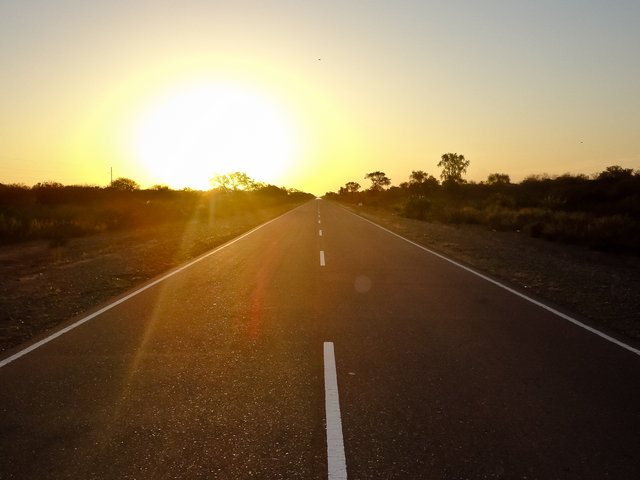
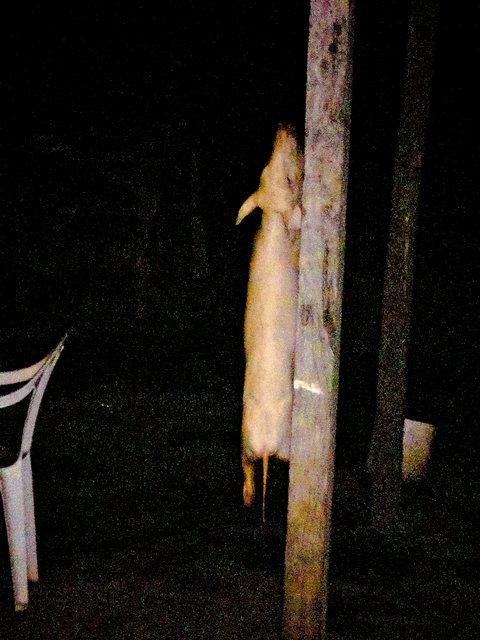
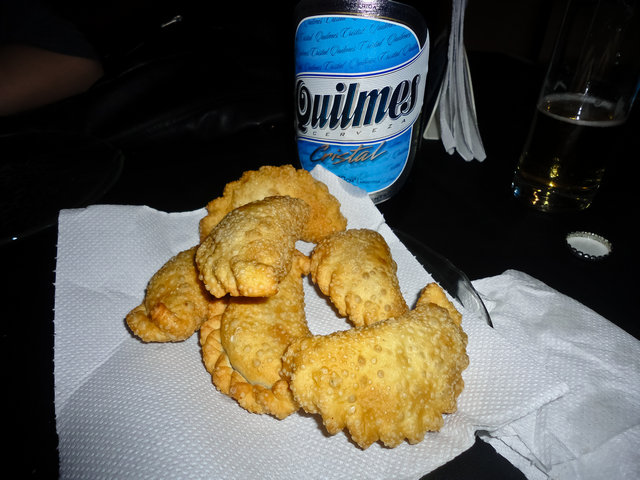
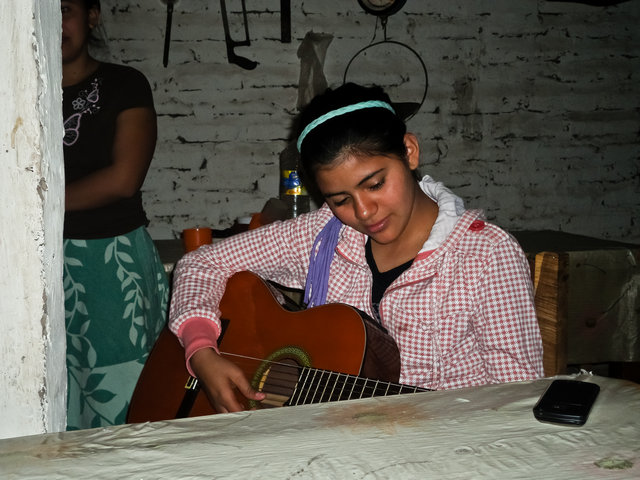
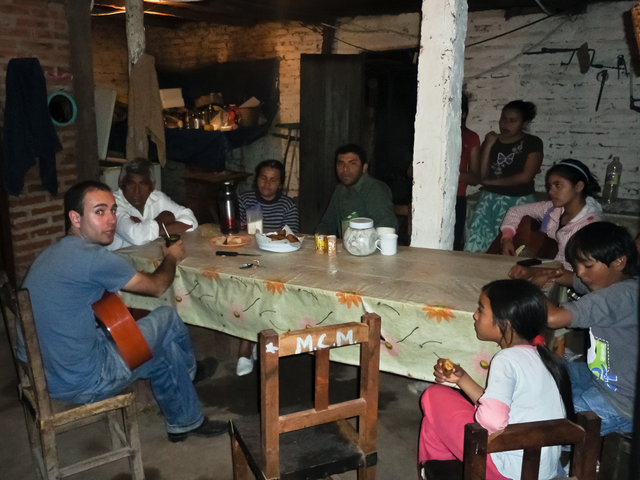


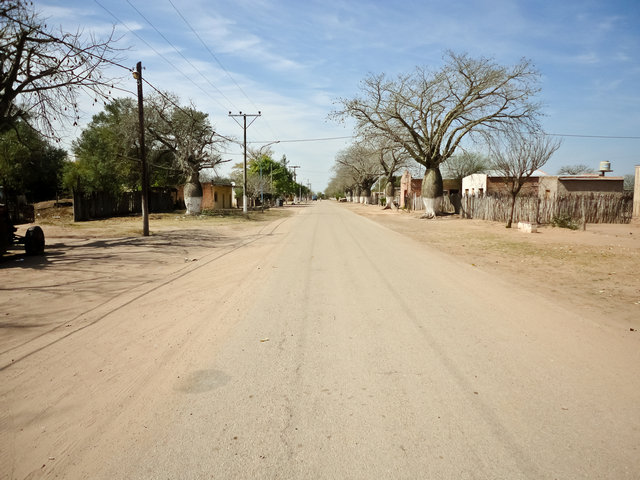
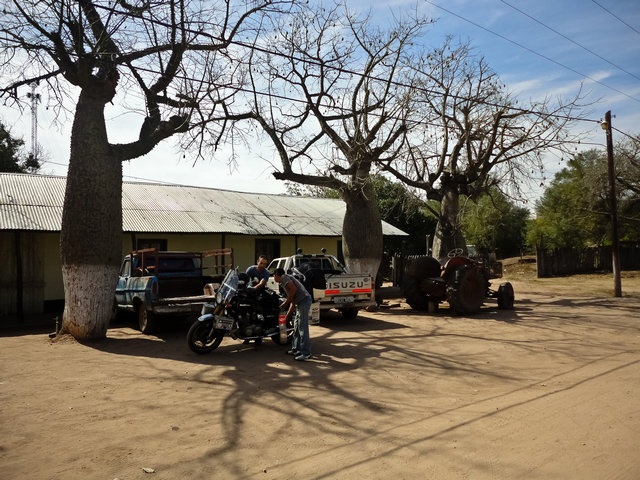
Comment
-
 shirazdrum
shirazdrum -
 shirazdrum
shirazdrum
AUGUST 27TH, 2011 - SALTA, THE BEAUTIFUL
We left Dragones and all its glories behind and headed west again towards Salta, the Capital of Salta province. The first thing I did was to find an empty jug and fill it up with extra gas just in case. The next was finding a shoe store to fix Lourdesís boots, but we never managed to find any; they were either closed or the locals sent us on a wild goose chase. In northern Salta, we had to turn south at a junction that split the road in three. One went to Bolivia, one to Chile and the one we took went south for the wine country, a 2000km long section of vines and spectacular scenery.
The dusty landscape of Chaco started to change and massive Andean peaks started too loom over us. The Sahara like heat finally gave away to much cooler breeze and we emerged from the Chaco in one piece. At one of our stops on the road, we walked into a field and unbeknownst to us, it was filled with tiny Velcro looking seeds like burrs which stuck to everything. I was wearing my riding pants and I only got a few, but Lourdesí pants got covered with these sharp little burrs. We spent hours picking them up with tweezers and that definitely wasnít fun. we stopped for lunch at an ungodly unsanitary place surrounded with stray dogs. They circled around the table and followed my fork every time I put it in my mouth. Of course they wouldnít go anywhere close to other patrons as they would beat them off, so they stuck with the dog loving gringo in hope of a bone.
We stopped so many times that before we knew it, it was getting dark and we only racked 100km that day. As we were in no hurry to get anywhere, we camped at a police station on the highway and called it a night. Salta was only a short ride away and we arrived there the next day well before sundown. Salta is charming city, far away from the aristocrat Buenos Aires province and heavily influenced by its close neighbors Bolivia and Chile. In fact, Salta is everything that Buenos Aires isnít and in a good way. Salta still has its South American charm of the 70ís before the McDonald dominated the world. Small pastry and deli shops were found on every corner and the people were in no hurry to get anywhere. We liked Salta.
Six days before we entered Salta, two young French girls were raped, beaten and murdered execution-style outside of the city while hiking, and this news was a horror to the locals. ďSalta is not Buenos Aires, these things donít happen hereĒ, and they are right. The circumstances of these crimes steered so much attention to this quite city, as Iím sure no European female will ever set a foot near this province again for some times to come. Although my heart goes out to their family, itís unfair to judge the population based on a single terrible crime. We were warned about the danger of traveling, but I donít pay too much heed to these kinds of warnings; thatís how I keep my sanity.
We bought some salami, olives, cheese and bread for dinner and headed to another favorite crashing place of mine: fire stations. The first station had no room but the second station gave us a room to stay in. In much of the world, fire stations, churches, schools, and even the city administration provide assistance to tourists, and not too many people know about that. I have slept in so many different places that I canít even remember, but the major advantage is that you always meet new people. The firemen were super cool, helpful, and we had a lot of fun at the station. They helped me out with rigging up a second camera on the bike and best of all they had internet, shower and a kitchen too.
Before entering Salta, we found a map of the area and finally I could navigate with more precision. Our next destination we decided was to be Cafayate (not to be mistaken with Calafate. Calafate is in Southern Patagonia, and the story from there is here, If you havenít read that one you definitely should), 250km to the south. We had no idea what we would find there but the few pictures we saw from the map was enough to make me itch. The caption read ďSalta, Tan Linda Que Enamora.Ē This 250km section would turn out to be one of the most amazing landscapes Iíve laid my eyes upon. Stay tuned.
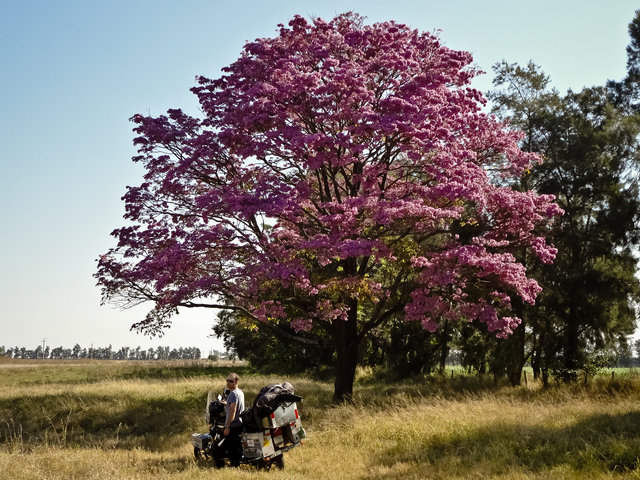

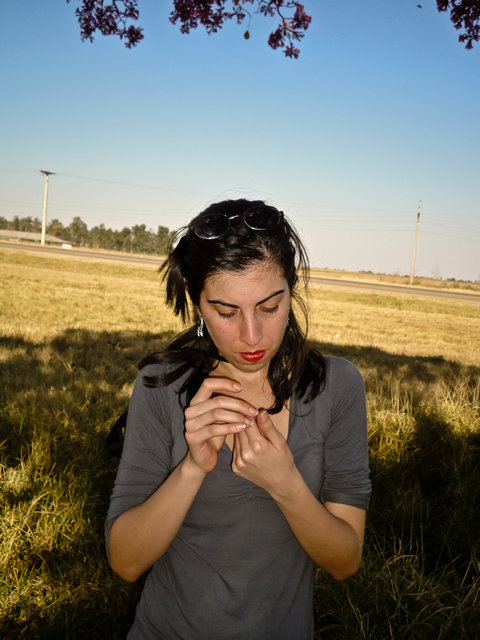

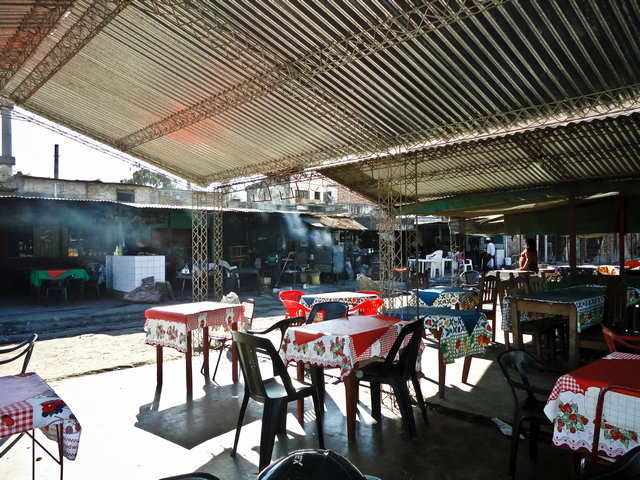
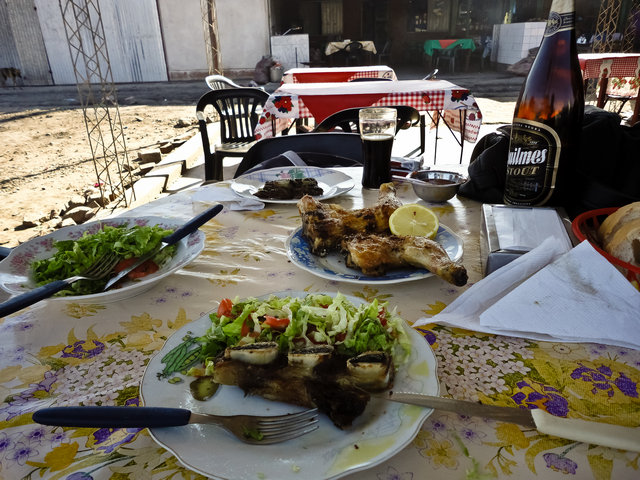

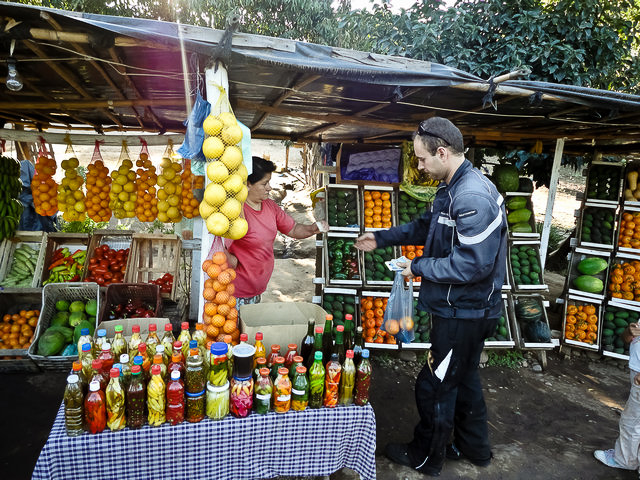
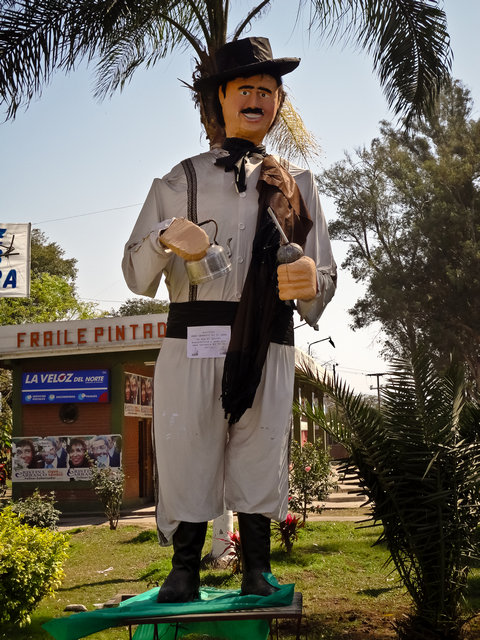
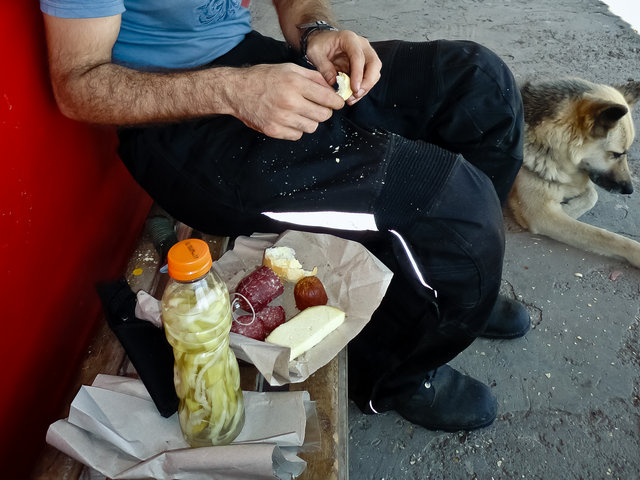 Last edited by Guest; 08-28-2011, 12:44 PM.
Last edited by Guest; 08-28-2011, 12:44 PM.
Comment
-
 shirazdrum
shirazdrum -
 shirazdrum
shirazdrum -
 shirazdrum
shirazdrum
SEPTEMBER 1ST, 2011 - CAFAYATE, ARGENTINA
We finally woke up early, took hot shower at the fire station, and headed out due south for Cafayate. We went five blocks and I was hungry already so we stopped for one last salami and bread in Salta. We only had 250km to go and it was early in the day so I wasnít too concerned about the time. At one of our stops, there was an all familiar shrine built for someone who had died in a car accident. In most of South America, when people die on the road, their families build a little shrine for them on that spot. Depending on wealth of the family, shrines differ from a simple cement box to elaborate granite covered cabins. All year long, people leave water, candle and flowers in them, and in some I have even seen food. (Just in case they come back from the death and are hungry I suppose.)
This particular shrine had something I had never seen before. Apparently the deceased was a smoker, so people had been lighting up cigarettes for him instead of candles, and leaving a few unlit ones just in case he came back to life. That was a touching gesture and I liked it so much that I left him a few cigarettes too. So this is my will: when I die, leave me cigarettes too and donít forget the lighter either. If youíre feeling generous that day, a few liters of fuel would be nice too since I always run out gas.
The road started nice and turned gorgeous. We entered a landscape so extraordinary that the 100 degrees heat had no effect anymore. This was a land of massive sand stones, tall cliffs, blue sky, and a sun the size of a football field. I have spent a lot of time in Moab and Zion in Utah, but the enormity of this place makes Moab look like a dirt parking lot. The road with its class A asphalt twisted through cliffs after cliffs, and we rode from tropic to desert up and down with each ascend. What we could see from the road was a drop in the ocean of what was beyond, as the real beauty was always a mile off the road but it was mesmerizing nevertheless.
I donít think I ever used the 4th or 5th gear as we stopped constantly just for another picture. The 250km trip which should have taken three hours at most took us nine hours to complete, and we arrived at the wine producing town of Cafayate at sundown. Cafayate is a beautiful little town surrounded by vineyards and most if not all of its income comes from the barrels. Cafayate is a touristy town and being poor means that you donít get to enjoy it the way the others do, but that doesnít mean you shouldnít stop there.
We needed a place to crash for the night. We started by looking for the Police Station, but they were no good, and the tourism office was less than helpful. The hotel prices were arm and a leg so we went straight for the fire station again to see if we could find a place to sleep there, but the station was so small that it barely had room for their own fire-engine. As always, somehow things worked out. A guy at the station called around, and found us a place to camp at his friendís yard. When we got to the place, I saw no yard. The house was a colonial style mansion with an open area in the middle and the only way to get inside was to ride the 1000lb street motorcycle up 6 stairs with no ramp. I looked at the stairs and shivered but there was no other way as I wasnít going to leave the bike on the street. My first try almost ended disastrous as the bike simply wouldnít go up Ė it stalled in mid-air and started to roll back down. On second try, I gave it hell and she climbed all the way up the stairs and we settled down for the night; munching on salami, cheese, olives and bread yet another night.
I grew up not eating pork due to ridiculous religious taboos, but as soon as I reached the age of reason, I took revenge by indulging in this wonderfully delicious animal whenever possible. Now donít get Vegan on me, pigs are not cute, they are not funny, and they are not smart either. They are just what the good lord had intended them to be Ė stupid and delicious. In Argentina, pigs fulfill their destiny by voluntarily going into casings with white pepper corns, garlic and salt, and they get reincarnated into some of the best Salami in the world. The word Salamť comes from Italian and Salami is its plural form used in English to describe this product. Salami is produces in much of Europe and Americas, and itís an assumption that the Italians are the masters of this craft, but I beg to differ. In my opinion, Argentine salami is the best salami in the world, with Hungarians taking the second place, and then Italy. On average, it takes 30 to 40 weeks for salami to be ready for consumption, and to clarify something, Iím not talking about the garbage you find in supermarkets in United States sold as hard salami or Genoa salami. Genoese salami is a fantastic salami which comes from Genoa, but it has nothing to do with the crap they sell in US by the same name. Itís interesting to know that salami was originally made by peasants as an alternative to fresh meat as they could keep it for years. Now days, itís not uncommon that a good salami (once a peasant food) to be priced as much as three times of best cut of fresh meat.
Argentina is heavily influenced by Italian and Spanish cultures, and they created bests of both worlds out of this merger when it comes to food. On my trip to Uruguay, I discovered a very small village on the border of Argentina that was like heaven on earth. On both sides of the street, there were shacks with signs that read cheese and salami. Once you enter one of these huts, you can get high on the smell alone, and it doesnít help much that pretty farm girls shove samples into your mouth. I left that town almost broke as quickly as possible, as it was a sure way to get me to settle down.
I wanted to write a travel blog but somehow I ended up writing a whole page on salami and I havenít even scratched the surface yet. Now that I wrote about salami, I kind of want to write about hams too (again not the kind of ham you see on your thanksgiving table, thatís not ham, thatís an abomination to Spanish Jamůn.) Iíll cut this post short here so stay tuned for the rest of the story, but I canít promise that it wonít have any salami in it.
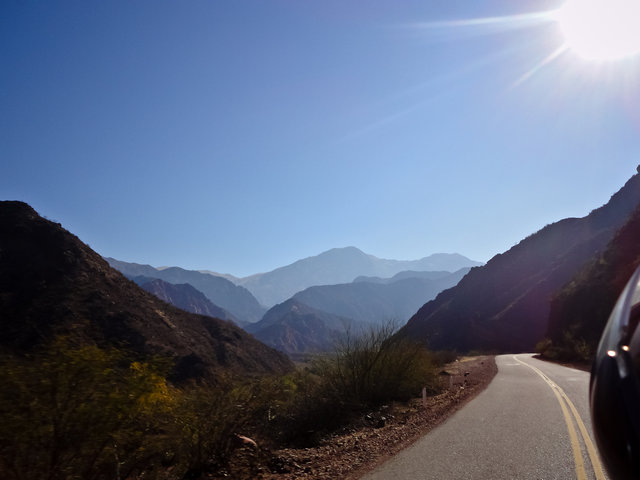
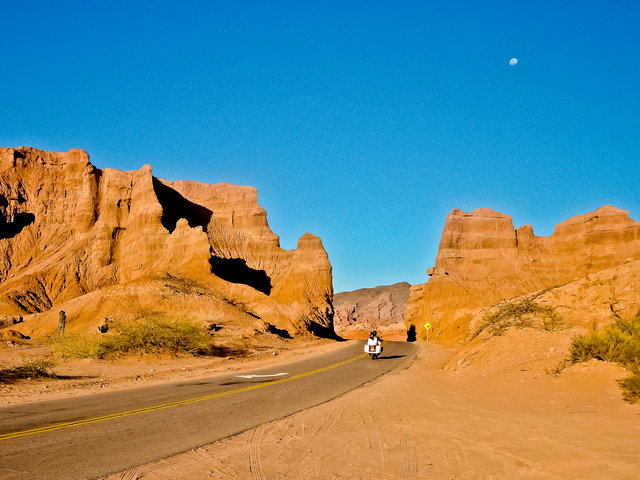

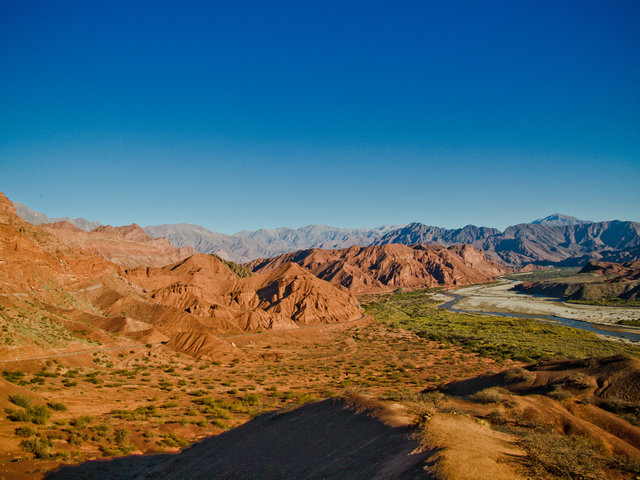
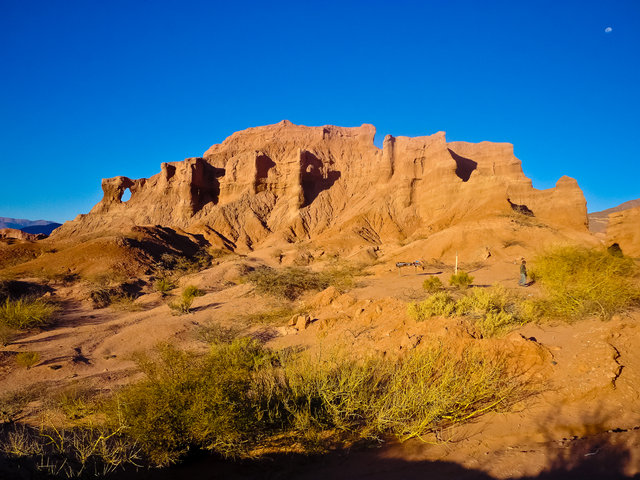
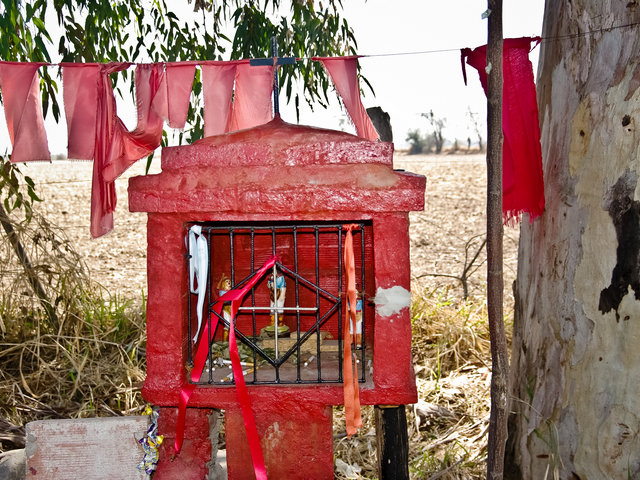
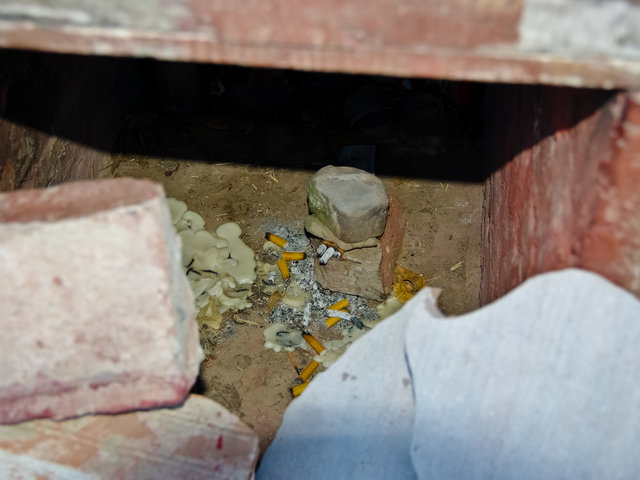
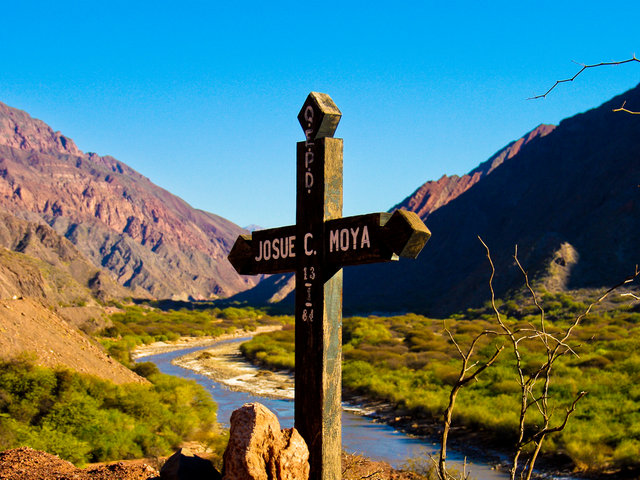
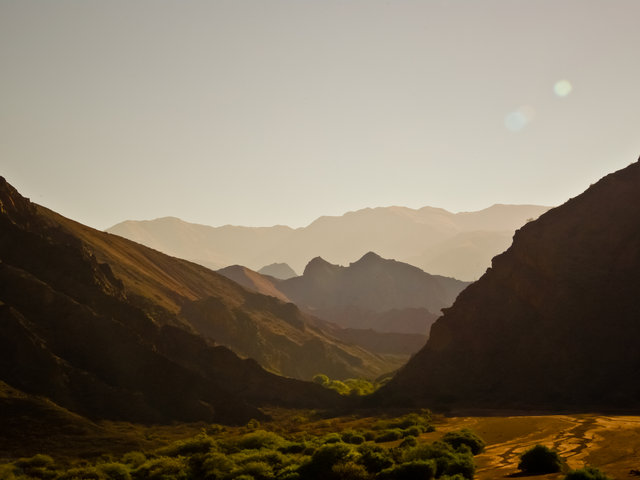
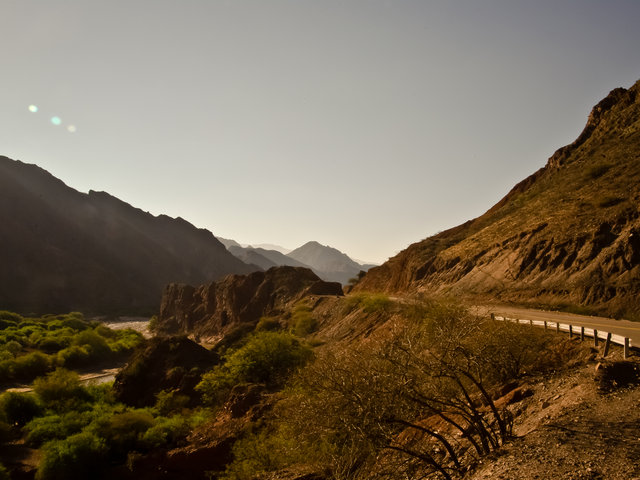
Comment
-
 shirazdrum
shirazdrum -
 shirazdrum
shirazdrum
SEPTEMBER 23RD, 2011 - THE BEES, TREES, AND A DEAD COW
When I find a road that is not on the map, my first reaction is to always roll on the throttle and ride straight for it. This time I found a road that was not charted, was reasonably short, and from the GPS Topo maps, it seemed to be passing through some beautiful landscape. Little did I know that this 50km section would prove to be one of the most isolated, hottest, and sandiest roads in entire Argentina.
When we left Cafayate, the only way back was to ride north for Salta again, and go east from there. But not wanting to double-back, I steered the bike into a single lane road which was a shortcut that would save us 150km of redundancy. We rode until sunset but finding a spot to camp became a problem. Before dark, we found a campground, but when I was told $15 for the night to pitch a tent, I bolted out of there. We finally found a nice spot by the lake at sundown and pitched the tent. It was a quiet place, the weather was cool, and not a single soul around for miles. I headed into the bush with my axe and headlamp, chopped some wood, and we settled in by the campfire. I skewered some meat, made a pot of rice, and since Lourdes had never made a fire before (City Girl), I put her in charge of the pit. Mate and a couple of guitar tunes later Ė we passed out for the night.
I woke up to a strong buzzing noise all around the tent, and I immediately knew what it was. The night before, in the dark, we pitched our tent under a low hanging tree which happened to host a giant Africanized bee nest. Call me a wimp, but I spent most of my life dodging Asian Giant Hornets. Almost unknown in US, these gigantic killing machines were the most fearsome intruders of my childhood. At two inches long with a wing span of three inches, these hornets are the deadliest and most feared of any flying insect. If the sheer size of these bugs doesnít give you nightmares, they have five eyes Ė two on the sides, and three on top of their head- a stinger the size of your pinky, and they can fly over 50 miles a day. They attack in groups and they spray acid in your eyes before proceeding to tear your limbs apart. I was attacked twice in my life by these out-of-this-world bugs and I have a scar to show for each one. So itís safe to say that I systematically avoid anything that flies thatís not a bird.
Here's a clip of these hornets killing other bees
I crawled out of the tent slowly and looked around for the source of the buzzing. I found a bee-ball a little smaller than a football, (American) and they seemed to be on the edge for some reason. As I was taking pictures and showing the nest to Lourdes, they went ape****, and 100ís of bees started to swarm around us. I didnít care what they were selling Ė I didnít want it Ė so I started to run for my life and Lourdes followed hopping on one heel (One of her boots lost a heel early on the trip). We stayed by the lake until the bees were gone, then packed up and got the hell out of there.
The hot weather turned for worse and our water ran out. The pavement ended abruptly and the road started downhill which twisted and turned at a steep grade, and what covered the road was only loose gravel and sand. We were riding on a side of cliff, and the bike kept shifting towards the drop-off. As calmly as I could, I told Lourdes that if I tell you to jump, donít think twice, just jump off the bike if the bike starts to go down. The sand was unnerving. It would get very deep around the corners and my bald rear tire didnít have a prayer. As we descended into the valley down below, there was no going back. The road we came from was too steep and sandy for the heavy bike to climb back up, and not having good tires made it impossible. We had to ride this road out, no matter what.
If the road condition was dreadful, the valley was unquestionably beautiful. A turquoise swift river ran through the landscape, and tall cliffs surrounded the road Ė wild flowers, cactuses, occasional birds, and no sign of a human life anywhere. At the lower parts of the valley, the river had washed off to the road, and river crossings became the new challenge. As I was filming, I had to set the tripod and the camera, cross the river on the bike, and have Lourdes ferry the rest to the other side. Before and after every river crossing came a long section of deep sand as fine as table salt, and the road would climb up again yet for another hill.
We started at 9 am and it took us five and half hours to cover 50km. When we finally got out of this paradise, I wanted to kiss the asphalt. We were on the verge of exhaustion, hungry, and severely dehydrated. We found a roadside Parrilla (similar to steak house) and parked the bike. I told the waitress to bring on the drinks with as much meat as she got. She showed up with a giant platter, and we ate and drank for as long as I remember. The bill was the most expensive I paid on this trip: $25. That was for two 40 oz. beer, soft drinks, two racks of ribs, five sausages, two steaks, unlimited salads, and bread. We stayed at the grill for hours before heading back into the boiling inferno. I looked at the GPS and the closest town was called JoaquŪn VŪctor GonzŠlez, (named after a politician of the same name) and the next was called Pampa del Infierno (Land of Hell), so I figured we had enough hell for today so we headed for GonzŠlez.
On the road I started seeing big nice yellow lemons here and there, and wondered where they came from. Then I started to see them more frequently, until I saw something that stopped me on my track. A semi trailer had flipped over on the road, and yellow lemons covered the highway. We apparently got to the truck just minutes after the accident, as there was no one around. The driver was OK but very frightened, and rightfully so. The air smelled like lemonade factory and besides the misfortune, it was a beautiful scene. Then people started to show up and proceeded to steal lemons. The driver seemed not to care or if he did care, there was nothing he could do. Ten ton of lemons that takes a crew of workers a few hours to load, disappeared in front of our eyes in matter of minutes. Things disappear in South America without a trace, and the driver knew it too well to try to stop it. Stay tuned.
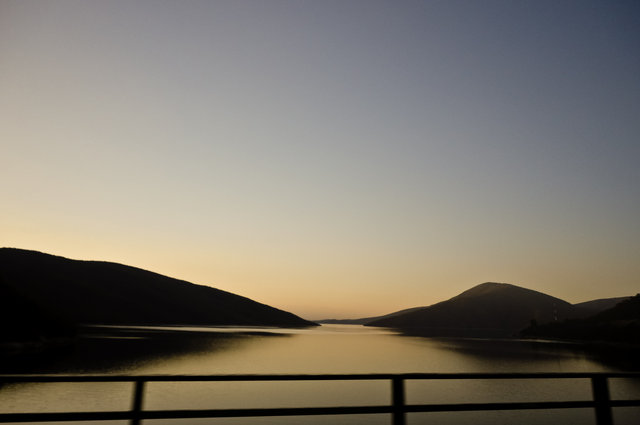
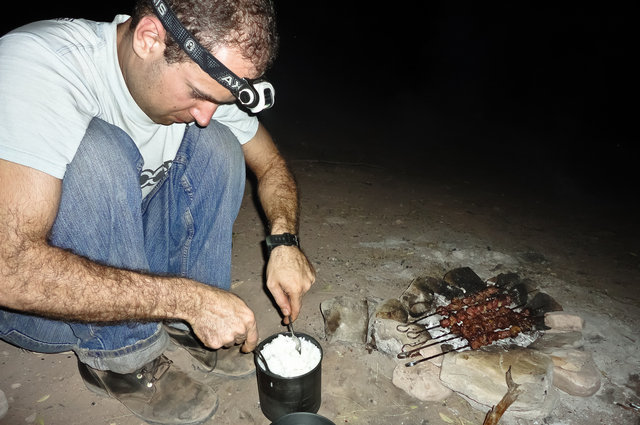
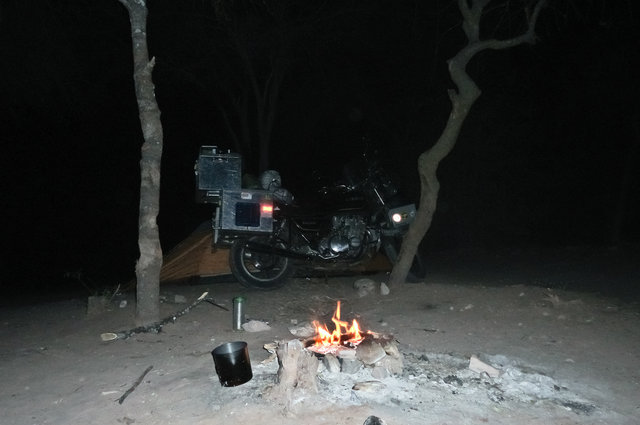
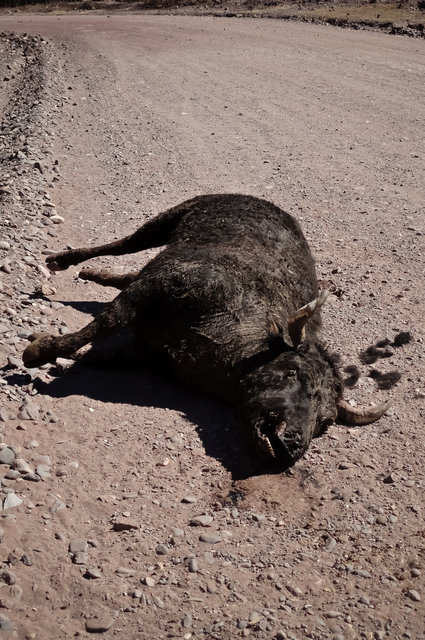
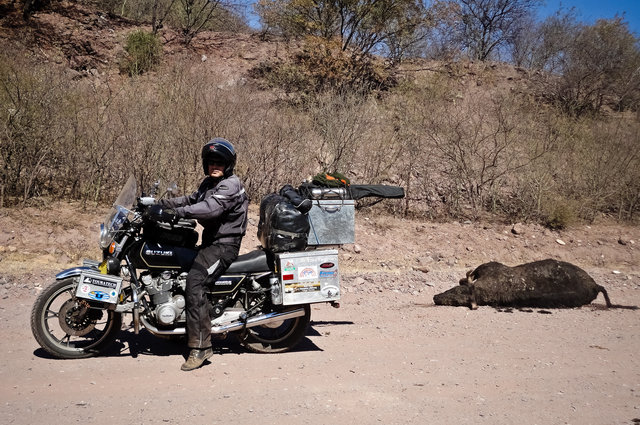


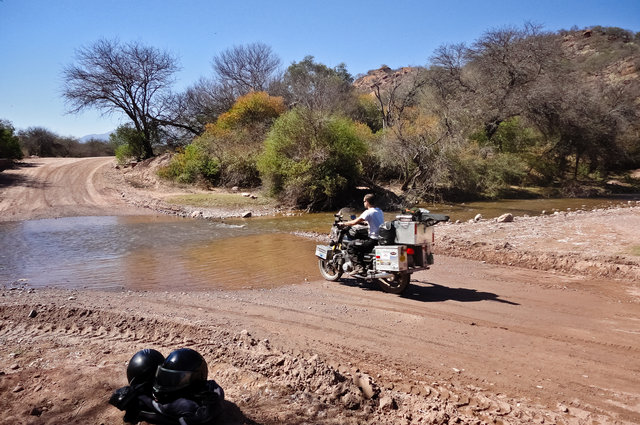
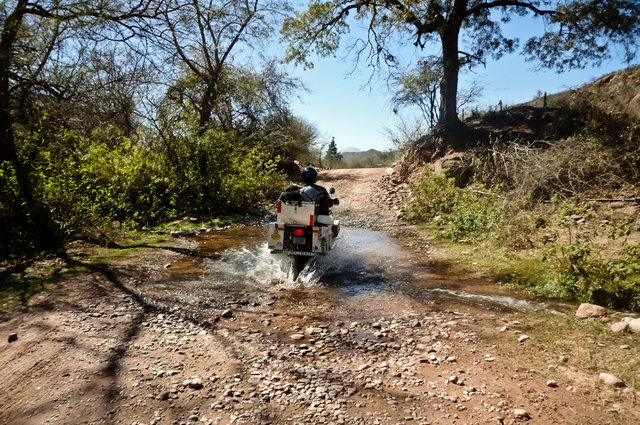

Comment
-
 shirazdrum
shirazdrum -
 shirazdrum
shirazdrum
.png)

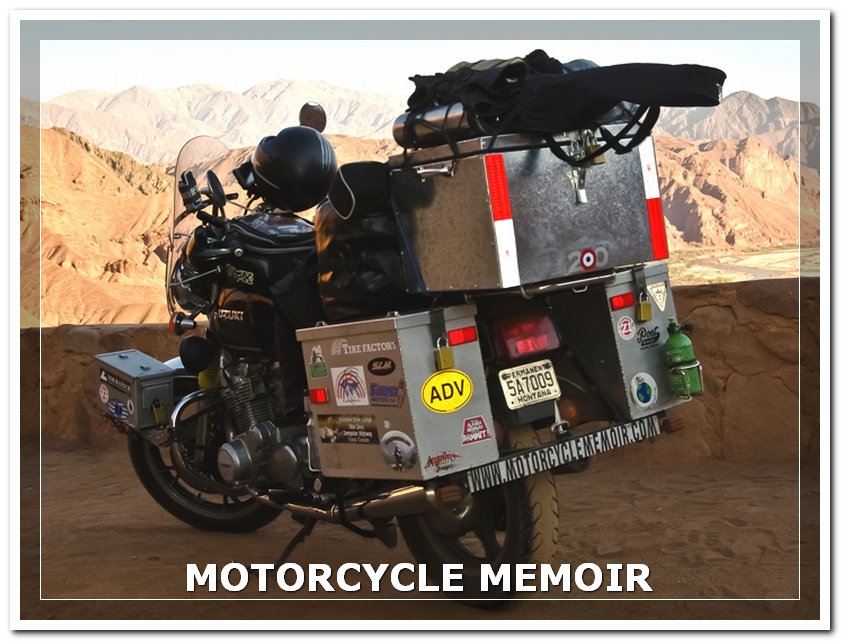


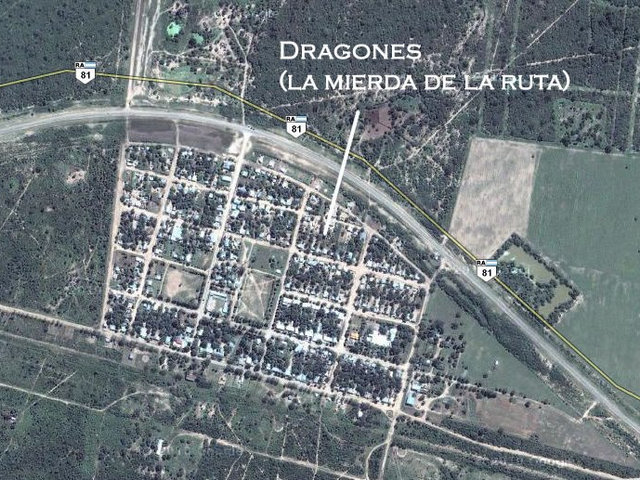
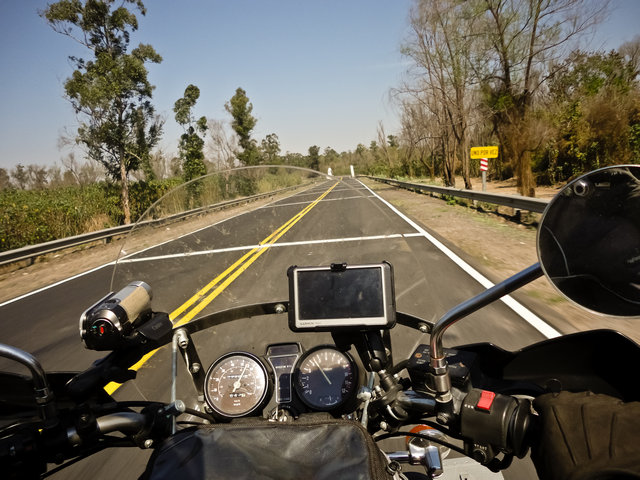
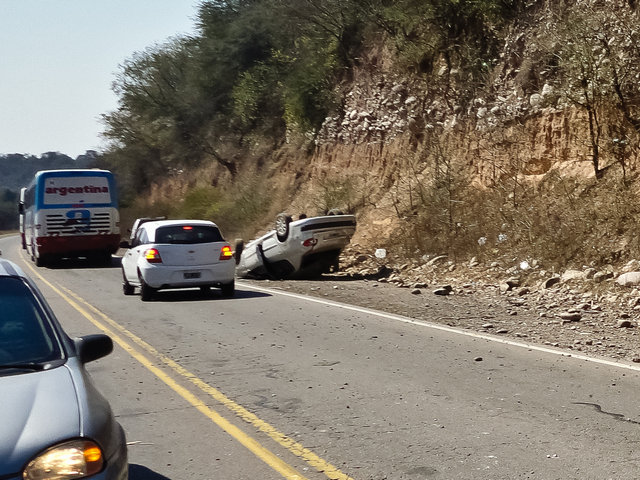
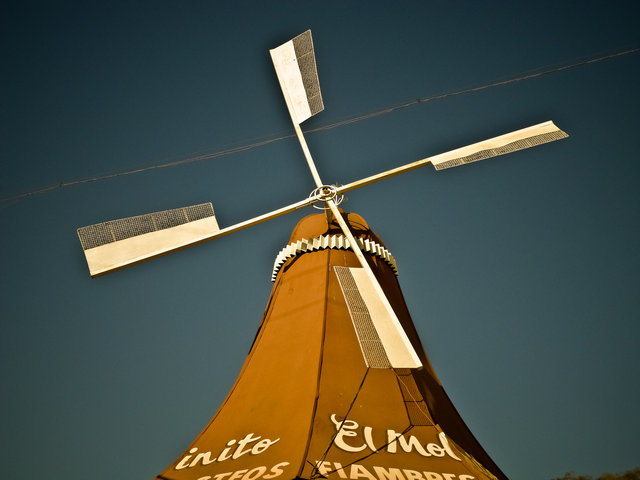
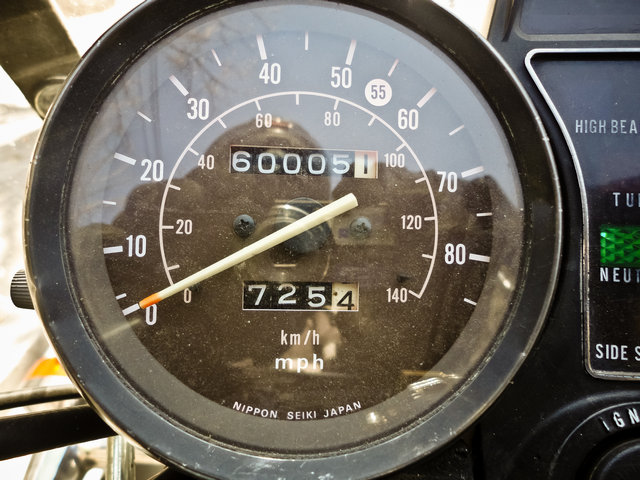
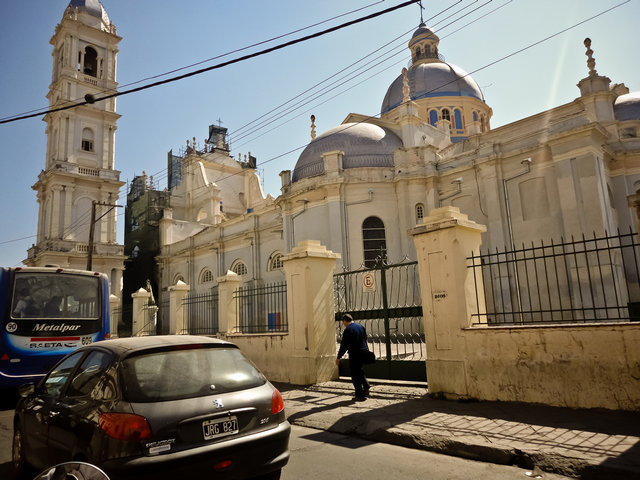
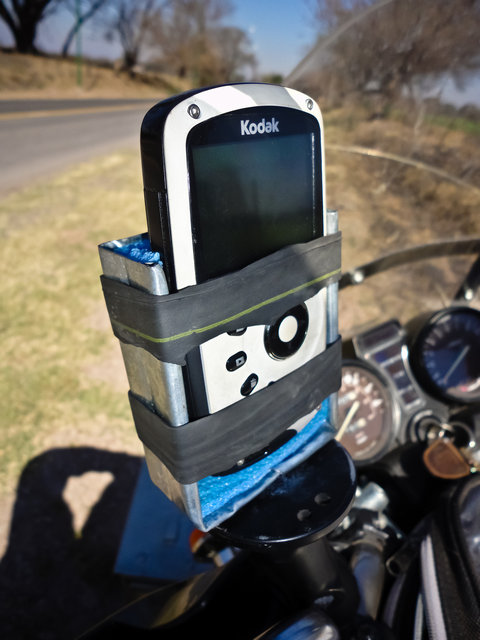
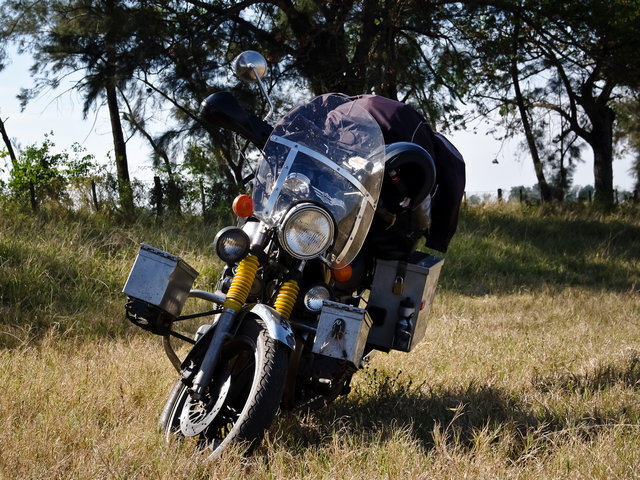
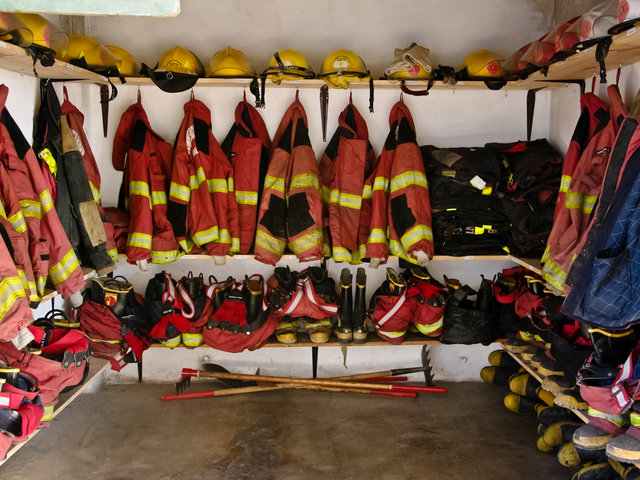
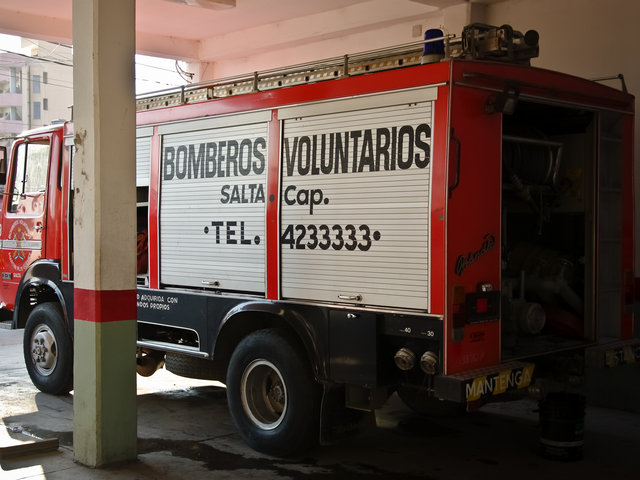
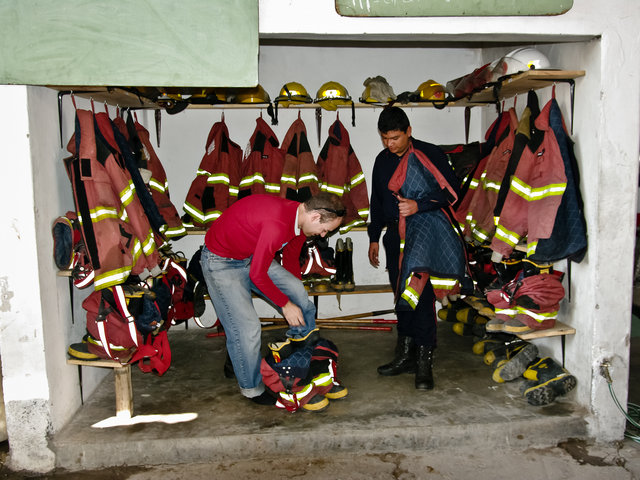
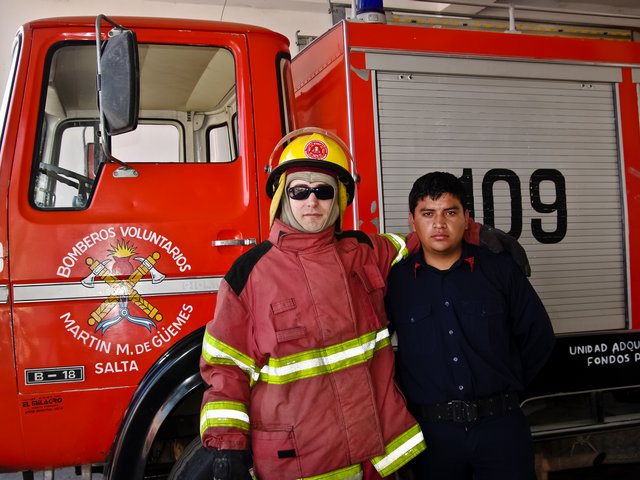
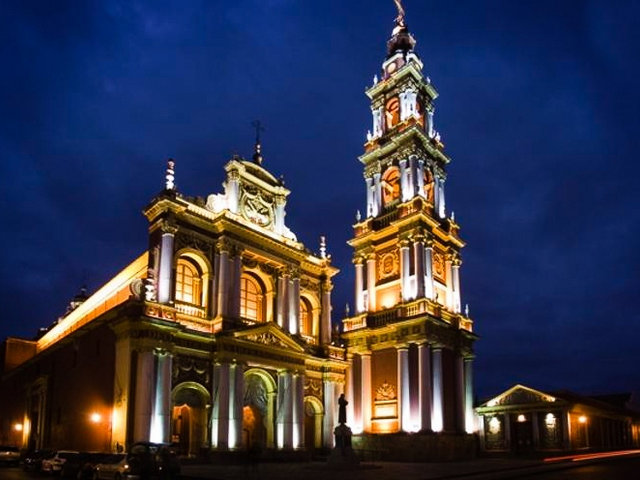
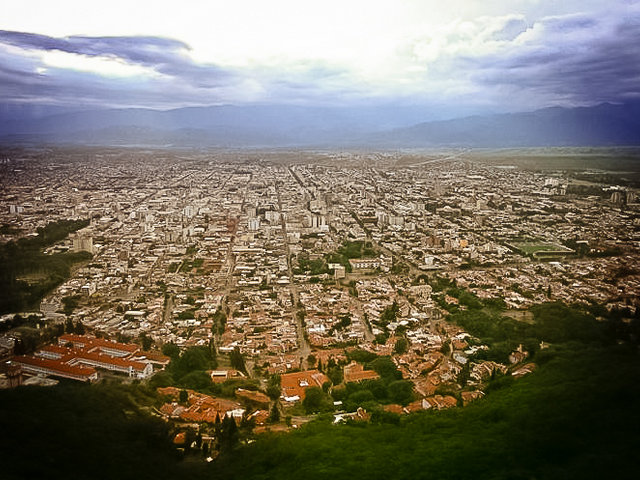
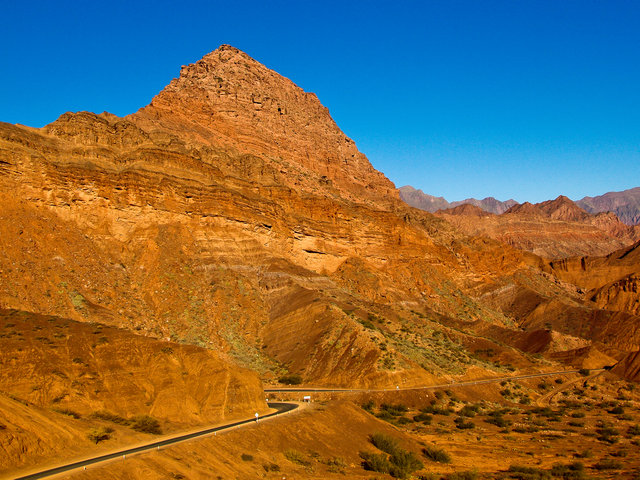

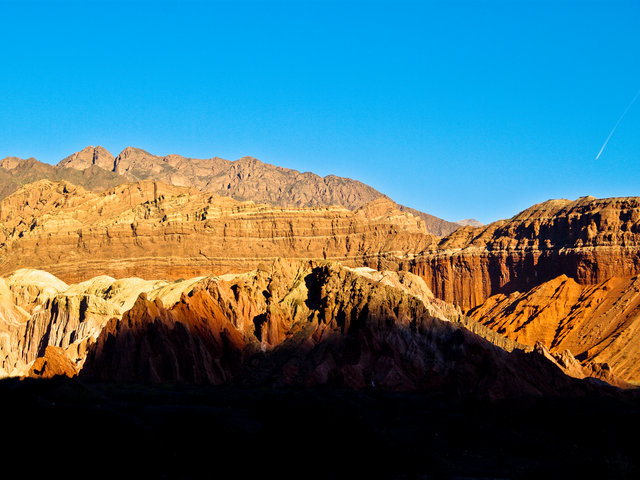
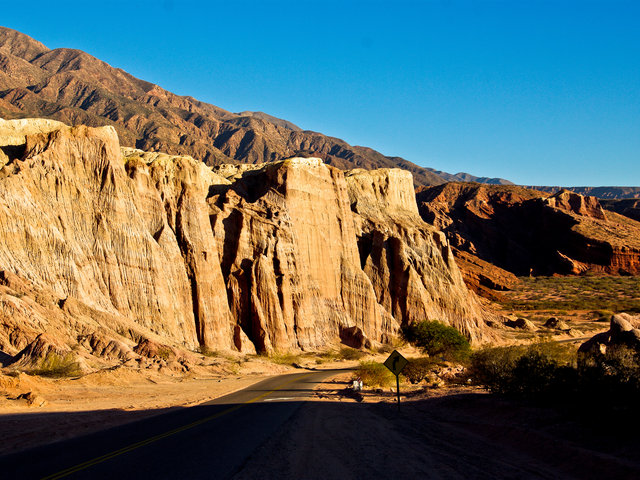
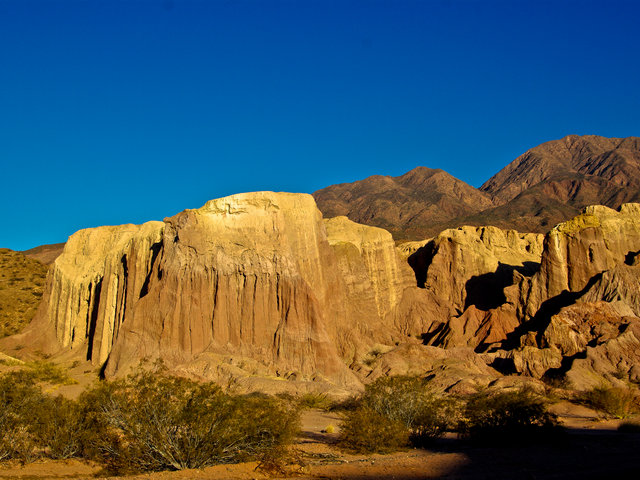
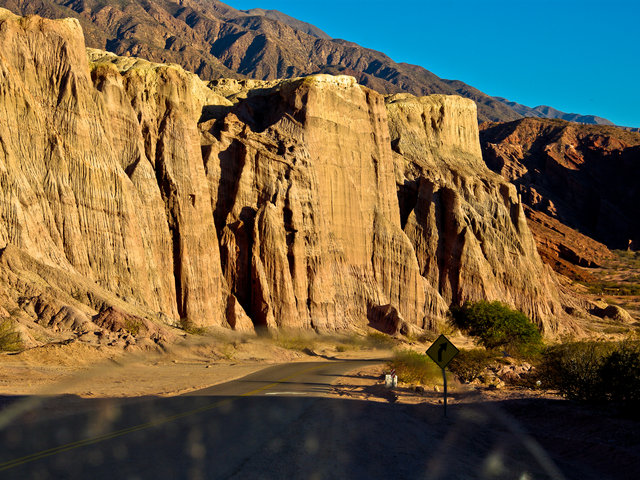
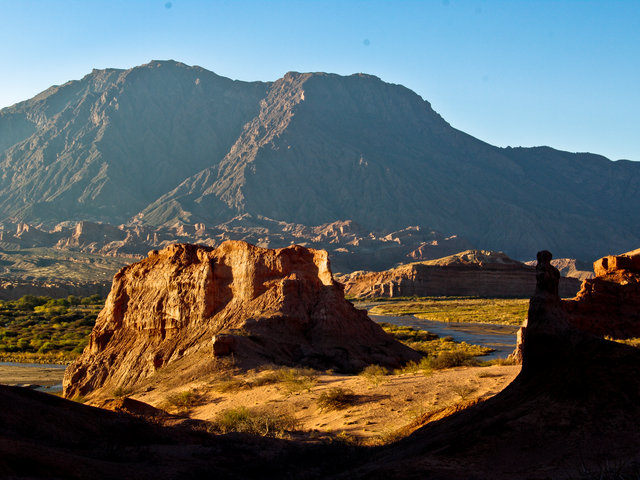
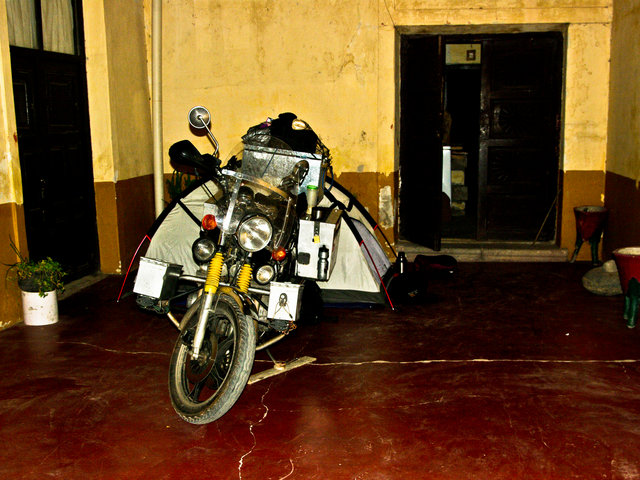
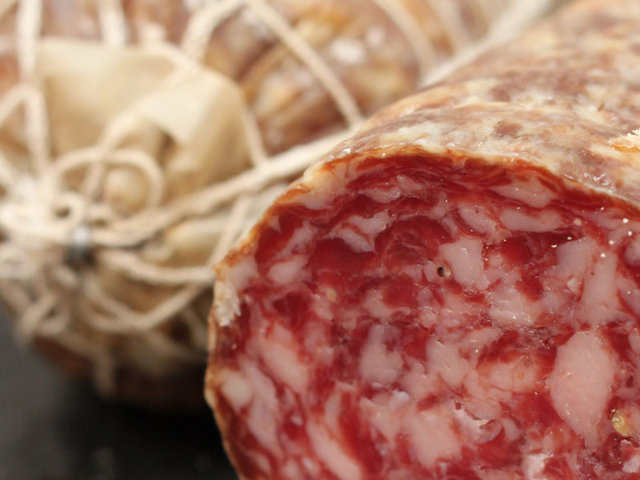

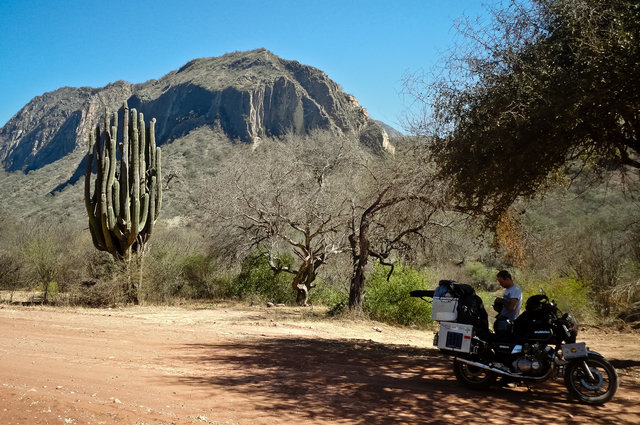


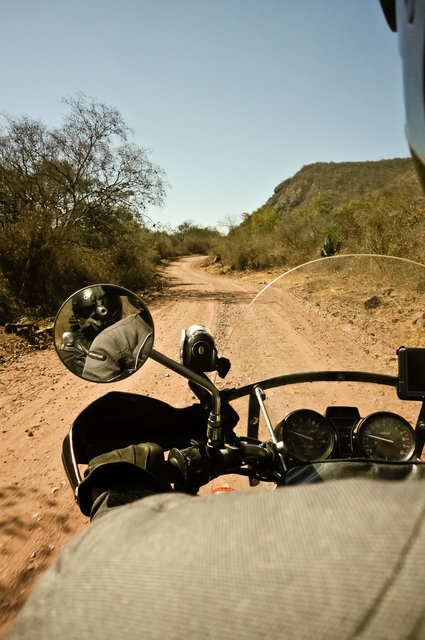
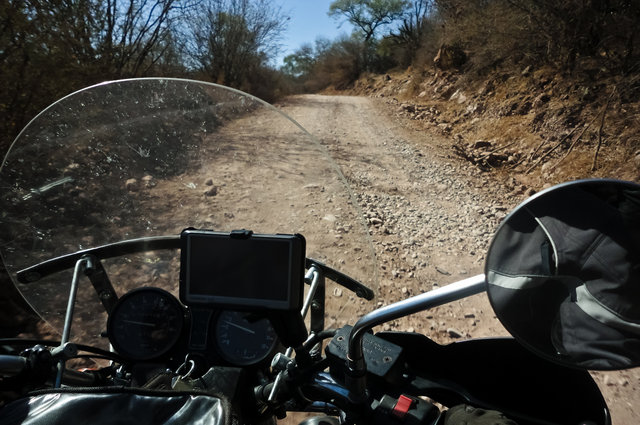

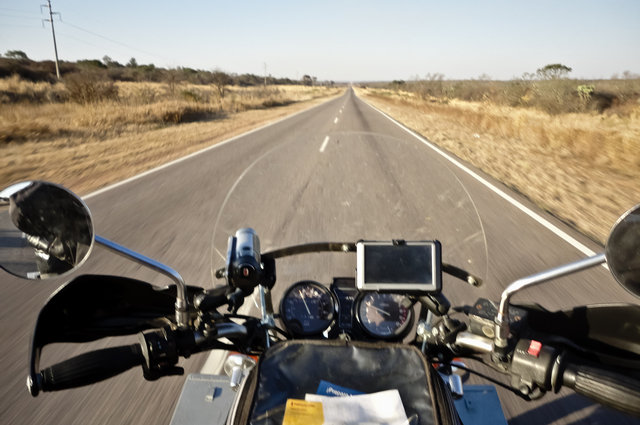
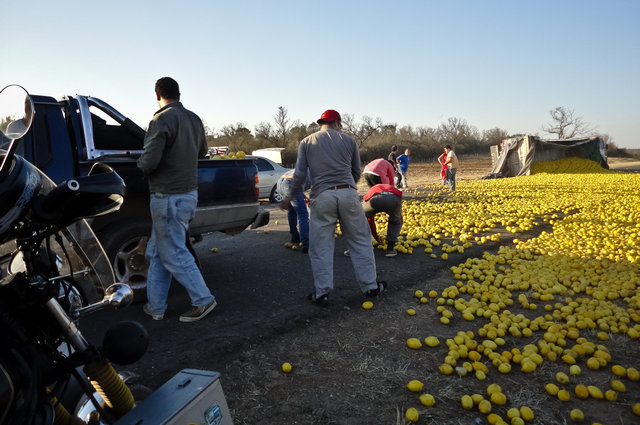
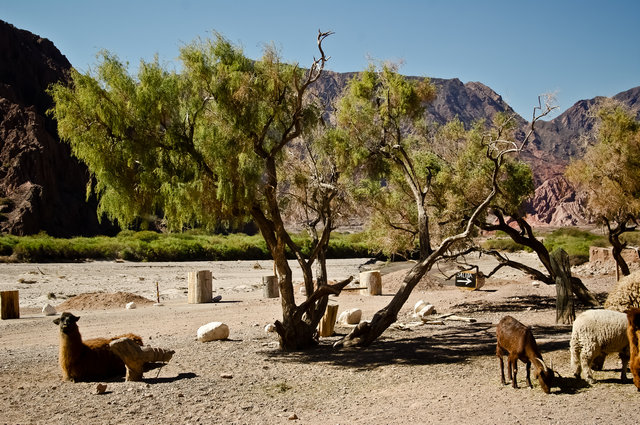
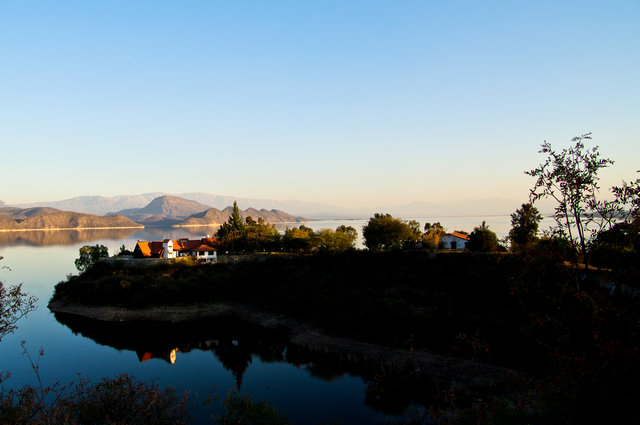
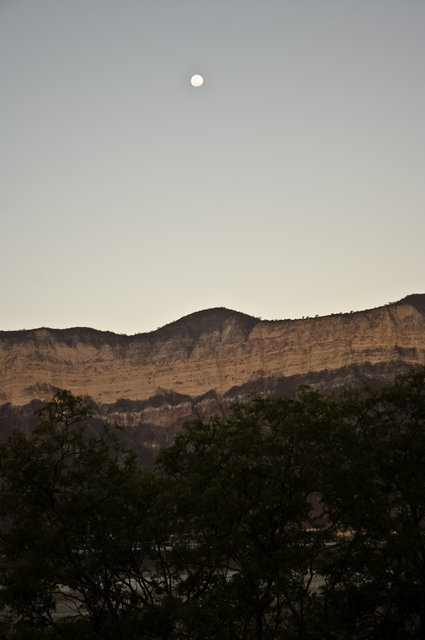
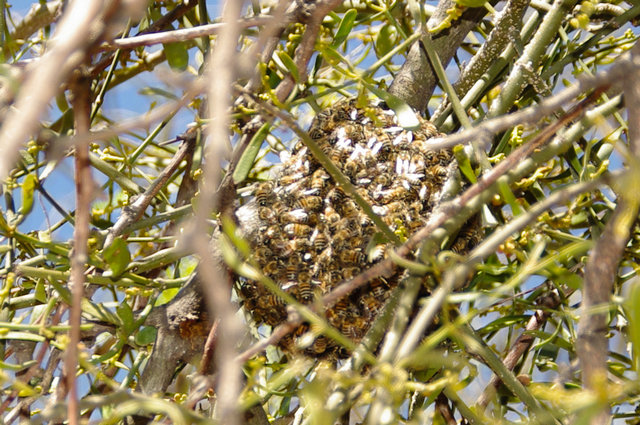
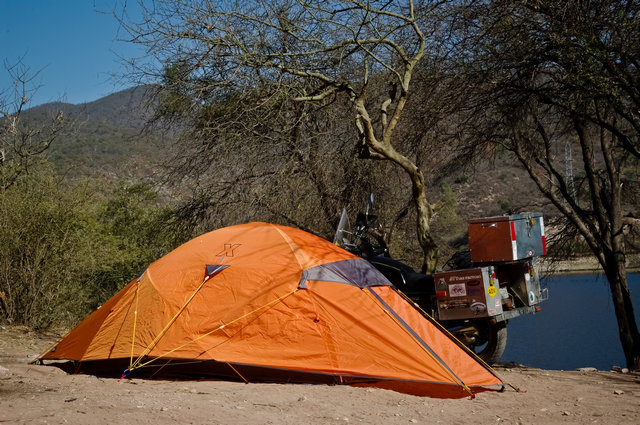
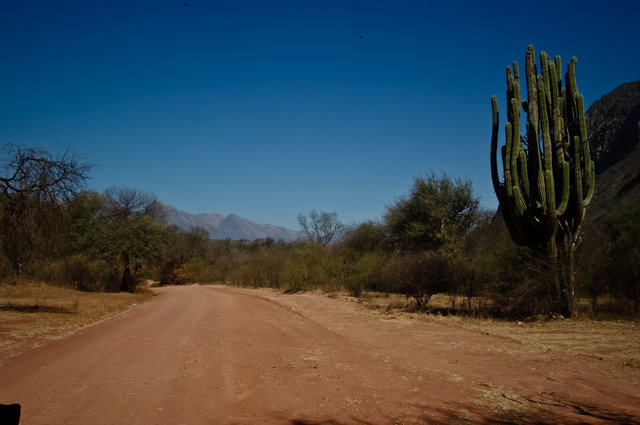
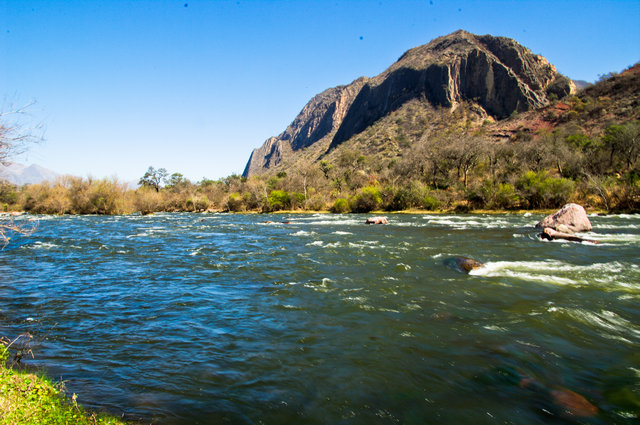
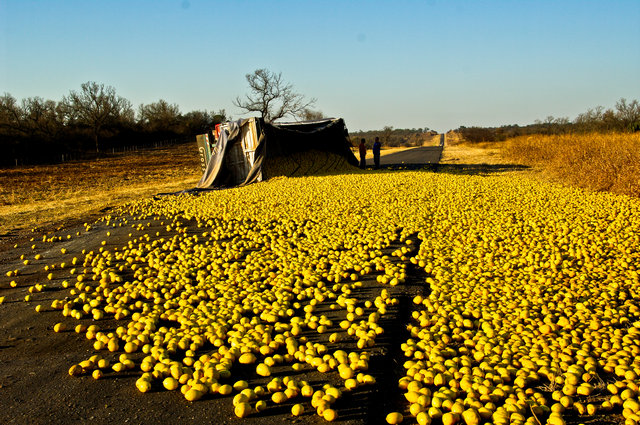
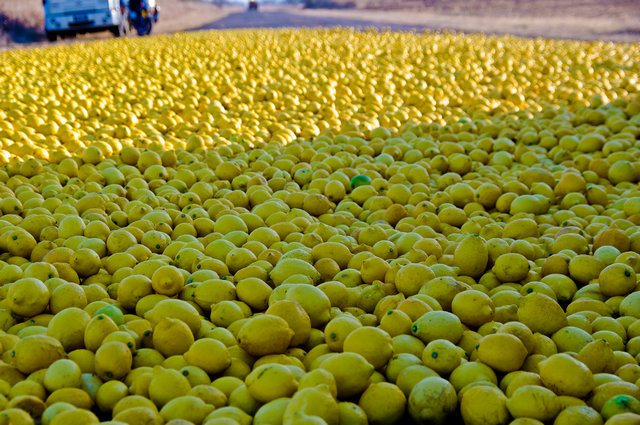
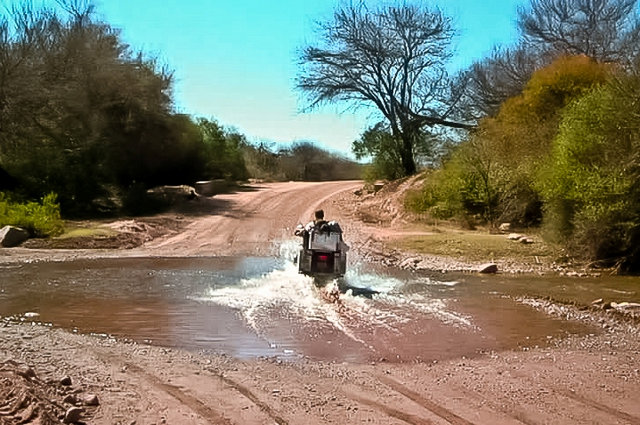
Comment